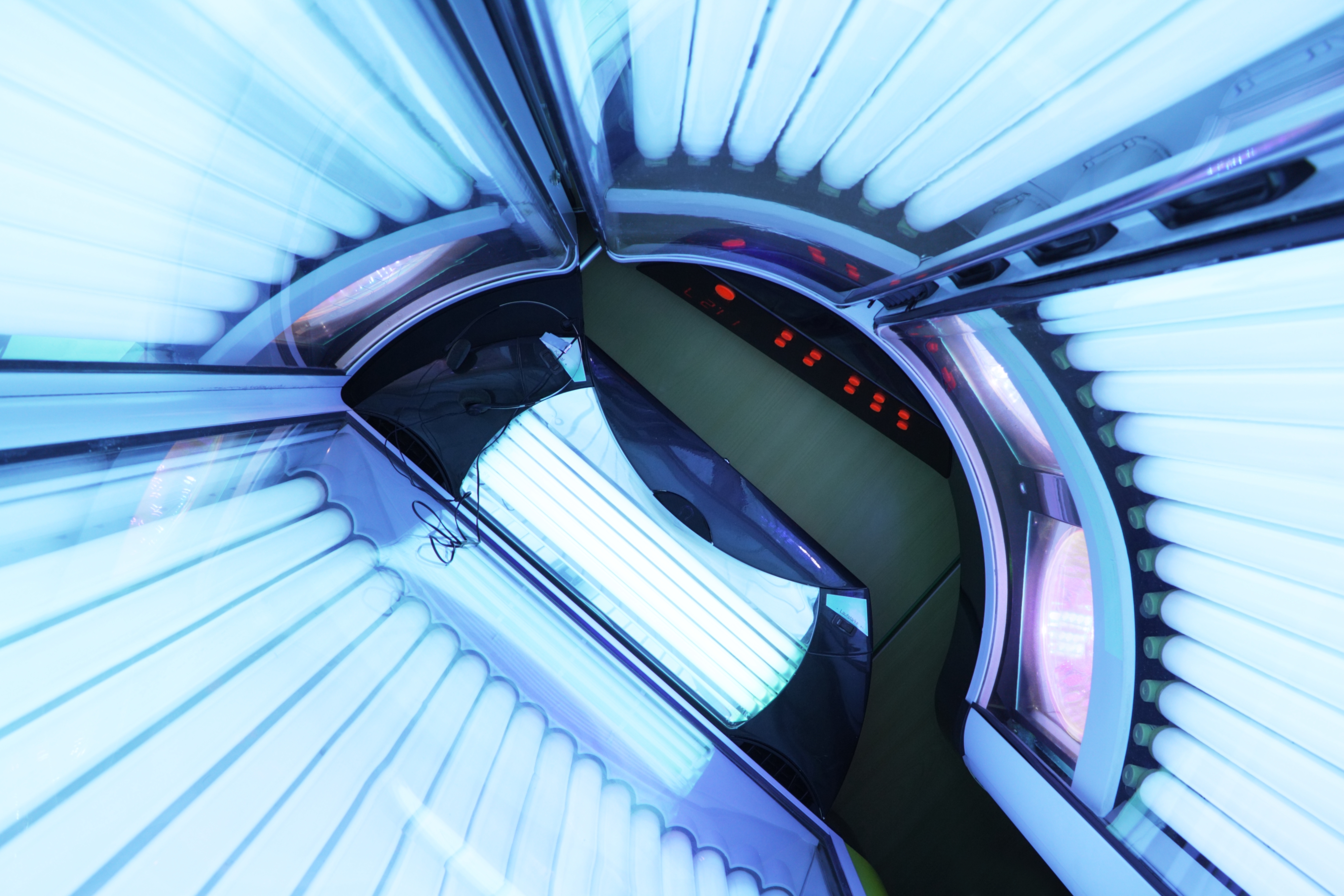The end of 2019 brings with it holiday gatherings, school vacations, and the annual tradition of New Year’s resolutions – with some of the most common resolutions being to exercise more and lose weight. Popular gym chains across the country capitalize on the broad desire to get healthy in the New Year with persuasive post-holiday marketing campaigns, but they’re also undermining public health warnings about the dangers of indoor tanning, according to a new study from UConn researchers published today by the Journal of the American Medical Association (JAMA) Network Open.
“An interesting study was published a few years ago that found an association between physical activity and increased risk for melanoma,” said Sherry Pagoto, a professor in the Department of Allied Health Sciences and director of the UConn Center for mHealth and Social Media who is the lead author of today’s study. “Exercise is typically associated with reduced risk for cancer, so it was surprising to see an association with increased risk for melanoma. Around the same time we began to notice some of the large gym chains offering tanning beds. This got us wondering just how many gyms are offering tanning beds and about the implications of marketing tanning beds to physically active people who we now know are at increased risk for melanoma.”
Little is known about how pervasive the presence of tanning beds is in gyms. In seeking better understanding, Pagoto’s team sampled locations from three of the six largest national gym chains in the United States – Anytime Fitness, Gold’s Gym, and Planet Fitness. Across all five regions of the country, the researchers identified 1,927 locations in 33 states and the District of Columbia, and then surveyed those locations to see if indoor tanning services were available for the location’s clients. A total of 1,727 gyms responded to the survey calls and inquiries.
Over 78 percent of the gyms reached had tanning beds: a total of 4,660 tanning beds were found in the 1,727 gyms. Planet Fitness provided more tanning beds than the other gyms, followed by Anytime Fitness and then Gold’s Gym. The Midwest region had the highest proportion of tanning beds in the sampled gyms when compared to the other four regions in the country – 87 percent of the locations surveyed in the Midwest had tanning beds.
“Gyms appear to be the new tanning salons,” Pagoto said. “This is surprising because our sense had been that the tanning industry was on the decline. However, it appears that the industry is just moving tanning beds into novel environments – with gyms being the most common.”
Pagoto continued, “Because people associate gyms with health, gyms are essentially putting a ‘health halo’ on tanning beds. The public health community has been trying to communicate the message to the public that tanning beds are not safe or healthy, but gyms with tanning beds are obstructing that message.”
The surveys were conducted between June 2018 and February 2019, and focused on only the three gym chains, which are among the six largest gym chains in the United States. Only one other chain, SNAP Fitness, provides tanning beds; the remaining two chains – LA Fitness and 24 Hour Fitness – do not offer indoor tanning, according to their corporate offices.
“The good news is that there are gym chains that do not include tanning beds in their business model, and so consumers have a choice,” Pagoto said. “I just have to question the motivation of any gym that uses a carcinogen to lure members. Is their priority really my health? Regardless of whether a consumer uses tanning beds, they should take pause when considering their choice of gym.”
Skin cancer is the most commonly diagnosed cancer in the United States. Melanoma, the deadly form of skin cancer, is one of the most common types of cancer among women, especially young women, and exposure to ultraviolet (UV) rays is the most preventable cause. While exposure to UV rays from indoor tanning beds is particularly carcinogenic – more than 400,000 cases of skin cancer may be related to indoor tanning in the United States each year, according to a 2014 meta-analysis – it’s also completely avoidable.
In addition to Pagoto, the researchers contributing to the study included Kelsey Arroyo, Jared Goetz, and Molly Waring in UConn’s Department of Allied Health; David Conroy and Ashley West with the Department of Kinesiology at Pennsylvania State University; and Samantha Mulcahy at Oakland University’s School of Health Sciences.
This study was supported by funding from the National Institute of Health’s National Heart, Lung, and Blood Institute, Grant No. K24HL124366. Visit nhlbi.nih.gov for more information.



